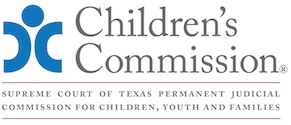
Texas Child Protection Law Bench Book
Updated September 2025
I. Additional Resources
• American Public Human Services Association (APHSA) website for ICPC Regulations and additional information[110]
• National Council of Juvenile and Family Court Judges, ICPC: A Manual and Instructional Guide for Juvenile and Family Court Judges[111]
• Vivek Sankaran, Foster Kids in Limbo: The Effects of the Interstate Compact on the Placement of Children on the Permanency of Children in Foster Care (2014)[112]
1. Leading Cases:
In the Interest of C.R.-A.A., 521 S.W.3d 893 (Tex. App.—San Antonio 2017) established that the ICPC does not apply to an interstate child placement with that child's natural parent. The court held that the ICPC does not apply to placement with a child's non-offending parent in another state. Article III of the ICPC prohibits a state from sending to another state “any child for placement in foster care or as a preliminary to adoption.” The court held that a biological parent is excluded from Article III, by both the plain, ordinary, unambiguous meaning of the term and an analysis of the ICPS's legislative history that indicates the drafters did not intend for it to apply to natural parents. Furthermore, the court reasoned that even Texas's adoption of the Association of Administrators of the Interstate Compact on the Placement of Children (AAICPC) Regulations that state ICPC procedures do apply to placement with parents in certain circumstances cannot override the plain meaning of Article III. The court concluded that it is inappropriate to resort to rules of construction or extrinsic aids when there is no ambiguity in the language and that when Texas adopted the AAICPC, it did so within the limits of state law which specify that rules or regulations that contravene statutory language or impose additional, excessive, or contrary burdens on the statutory provision are invalid.
Prospective adoptive parents who were Colorado residents with whom a child had been placed by the child's Texas managing conservator argued that the Colorado court where the petition for adoption was pending had jurisdiction over the child. Rejecting this argument, a Texas Court of Appeals in Unger v. Baker, 01-89-00803-CV, 1989 WL 97743 (Tex. App.—Houston 1st Dist. Aug. 18, 1989)(unpublished) held that under Article V(a) of the ICPC, the managing conservator, as the sending agency, retained jurisdiction over the child because the child had not yet been adopted. Therefore, the child was subject to the jurisdiction of the Texas trial court in which the managing conservator had filed a motion to remove the child from the temporary placement with the prospective adoptive parents and overruled the prospective adoptive parents' motion for leave to file mandamus seeking rescission of the Texas trial court's order overruling their special appearance to contest the Texas court's jurisdiction.